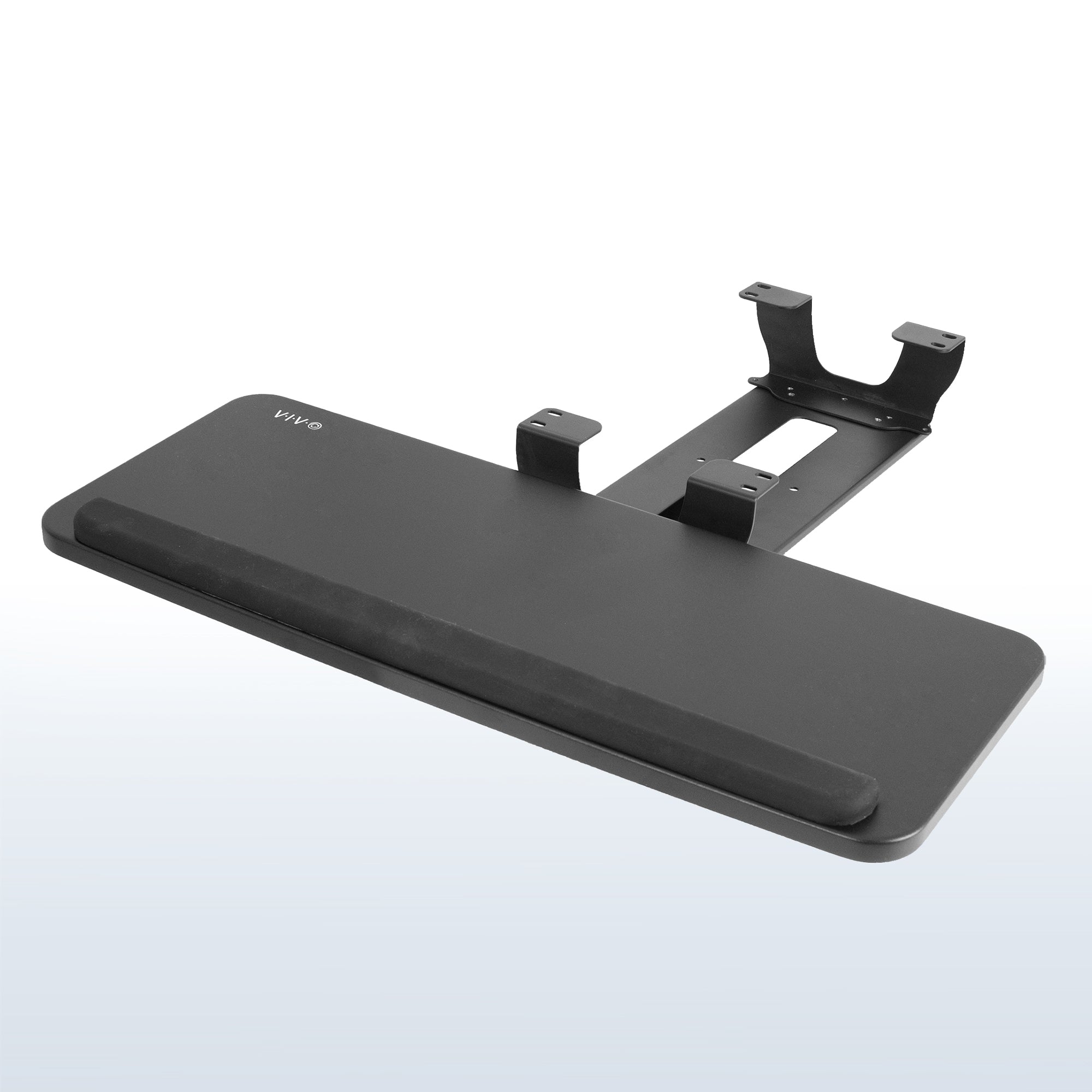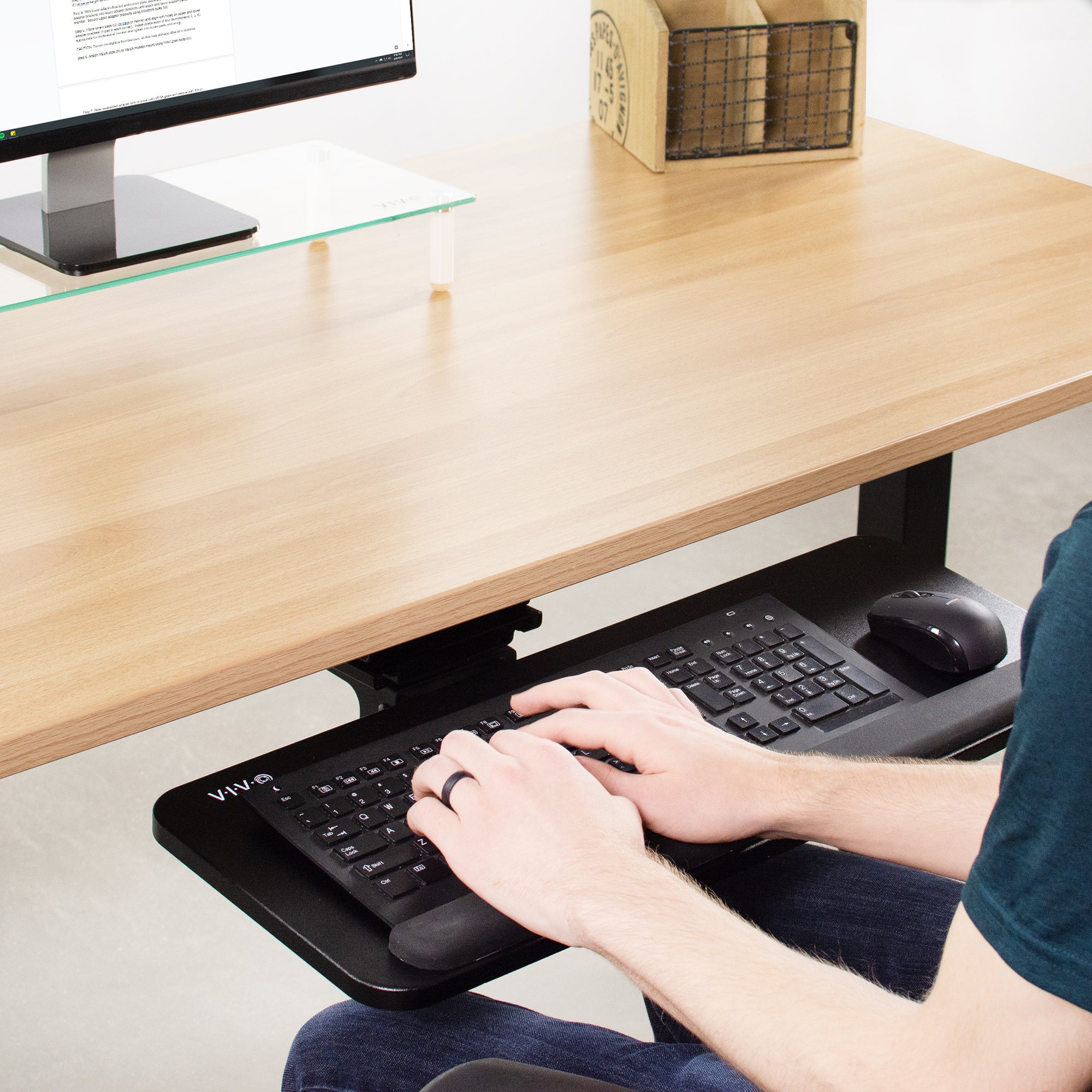I installed this tray on a repurposed wood kitchen table. Because of the 2-5/8th-inch thick crosspiece of wood under the table top I also ordered the spacer kit. My table top is solid wood - I would not recommend installing this tray into a particle board desk top because of the weight of this tray and any stress you might put on it.Measure carefully before you install the tray so that it extends and retracts to where you want it. I installed my tray so it still sticks out 1-inch beyond the table top edge even when fully retracted so that it's easier to grab. Thus for me the forward edge of the spacer bracket is 2-7/8-inches back from the front edge of my table.I centered my tray on my table and also centered it on my computer. As you can see from the first photo an Apple wireless keyboard and mouse fit easily on the tray. I alternate them from side to side to vary the stress on my wrists. I ran a cord through the frame so that my wireless keyboard is always charged.If the lever to lock the sliding frame into place sticks down and jabs your leg you can remove the screw holding the lever in place, take the lever off, rotate the lever to a different angle, and reinstall and tighten the screw.I prefer to leave the tray in the extended position all of the time so that I don't have to readjust it each time. You can't keep the same tray angle locked in when extending and retracting it - the lock lever unlocks both the in-and-out motion and the tray angle. Also be aware the this tray can freely rotate left and right during use - there is no locking mechanism for this movement.BE WARNED that when you extend and retract the tray that you can scrape it against the metal frame and damage the tray finish. You need to take into account both the drop of the tray and the tray angle when sliding it in and out.This tray can be adjusted for both positive, negative or neutral cant, which I found to be a great feature for finding the best angle for minimizing wrist discomfort. I have my tray adjusted so that it rests on my upper legs while typing. There is about about 3/8-inch of up and down play when the tray is locked so I can slide my chair and legs into position fairly easily.The included wrist rest was awful. You can see that it has a rectangular honeycomb structure. There is flex where the honeycomb structure is absent, but anywhere close to the structure there is no give, which is very uncomfortable on your wrists. Also, the adhesive bottom can only be pressed onto the tray where the honeycomb structure is present, leaving 95% of the adhesive not secured to the tray. Lastly, the surface finish of the wrist rest attracts dust and skin cells which are difficult to remove even with a wet micro-fiber cloth. I replaced the included wrist wrest with a Fellowes Memory Foam Wrist Rest, Black (91782), which is a huge improvement in comfort. It stays in place without needing adhesive.For all of its features and the drop-down spacer option, I found this to be the best keyboard tray for me, and was $100 to $150 cheaper than other trays with comparable features.As long as you have a solid place to mount this tray and are a fairly competent do-it-yourselfer I would highly recommend this keyboard tray.Also, $70 to $100 is not much to pay in order to prevent carpal tunnel or pinched ulnar nerves.









